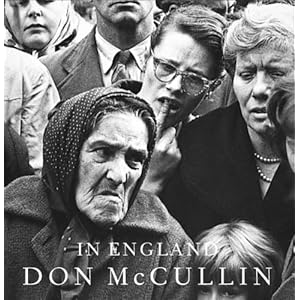My own nervousness at taking photographs of people without asking their permission, for Chapter 2 of the course, is put into brutal perspective by the risks he and his colleagues have taken. One of the most striking aspects of his work is with respect to the Vietnam war and the degree of pain in the faces of the GI's and the Vietcong during this conflict. I do not see much of this in modern reporting of conflicts such as the Iraq or Afghan wars, I suspect that photo journalists have far less freedom in pursuing subjects or access to the conflict.
I was inspired enough to invest in a number of his photo books:
The first, simply titled "Don McCullin" is a retrospective of much of his career and spans from his first days photographing street gangs in 1950's London through to quite recent landscape work. The cover image is the most iconic, the eyes of this Vietnam era shell shocked Marine bore into the soul of the viewer. This single image captures much of the sheer terror of modern warfare.
I also obtained "Don McCullin in England", a gentler although no less powerful series of photographs of England taken during the past 50 years.
It is an interesting journey around the country and contrasts images of the Beatles with the awful poverty of Northern England even in the 1980's. His style is very stark, the images are all black and white and typically dark, as if deliberately underexposed. This darkness gives the photographs a brooding atmosphere, these are not pictures of happy beautiful people.
Whilst I have no wish (or hope) to be able to take images similar to his war photography, the photographs in the "In England" book are a good example of social documentary and I may return to Don's work later in my course when encountering these subjects.




No comments:
Post a Comment